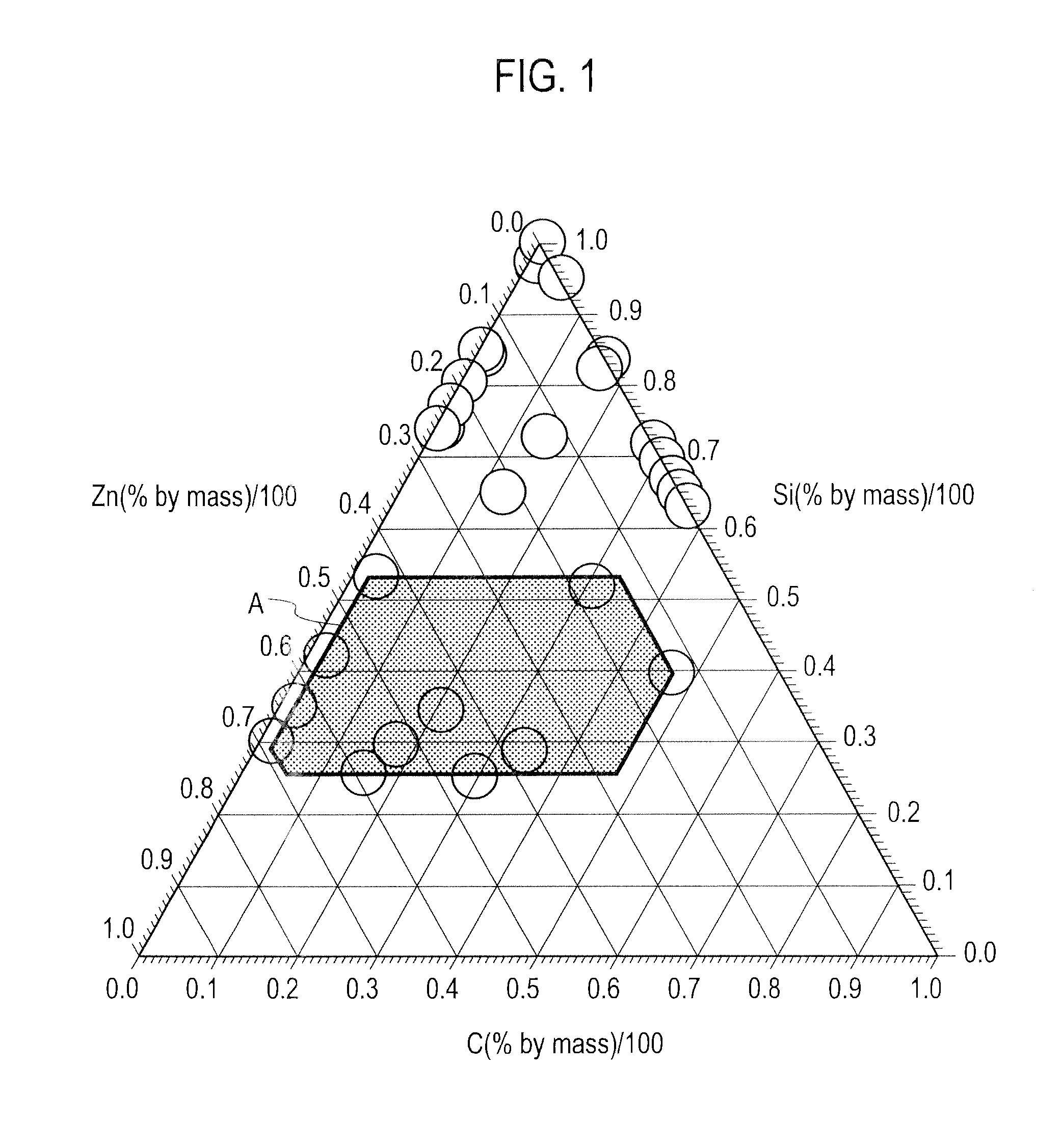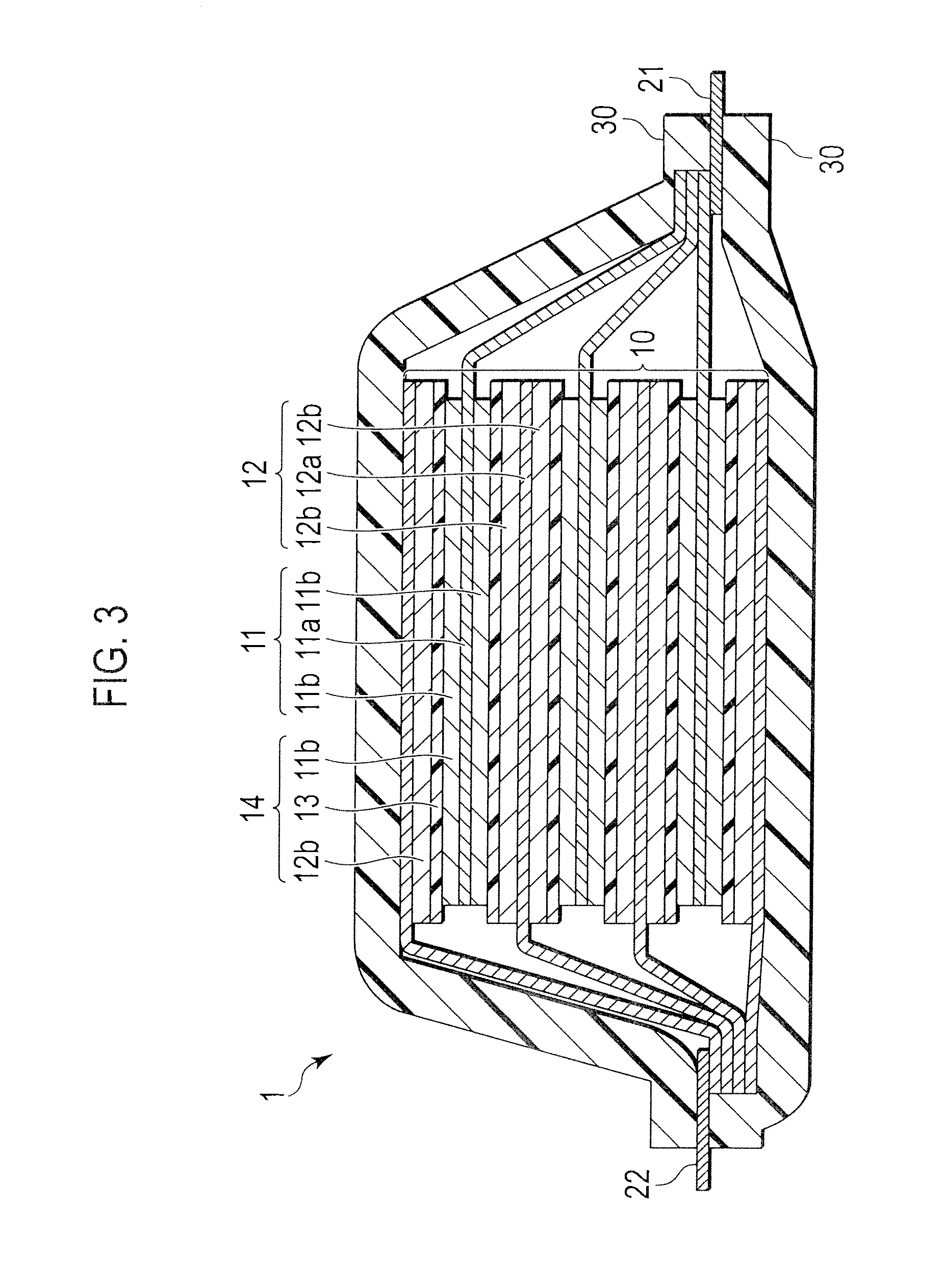Negative electrode active material for electric device
a technology of active materials and negative electrodes, applied in the direction of electrical equipment, metal silicides, cell components, etc., can solve the problems of reducing the actual capacity of the battery, difficulty in preparing raw materials, and low initial charge-discharge efficiency, and achieves improved initial charge-discharge efficiency and high cycle properties
- Summary
- Abstract
- Description
- Claims
- Application Information
AI Technical Summary
Benefits of technology
Problems solved by technology
Method used
Image
Examples
examples
[0067]Hereinafter, the present invention is explained in more detail with reference to Example and Comparative Example; however, the present invention is not limited to these examples.
[1] Preparation of Negative Electrode
[0068]As a sputtering apparatus, an independently controllable ternary DC magnetron sputtering apparatus (manufactured by Yamato-Kiki Industrial Co., Ltd.; combinatorial sputter coating apparatus; gun-sample distance: about 100 mm) was used. A thin film of a negative electrode active material alloy was formed on a substrate (a current collector) made of a nickel foil having a thickness of 20 μm using this apparatus under the following target and composition conditions. Thus, 29 negative electrode samples including the thin films of the negative electrode active material alloy having compositions shown in Table 1, were obtained
[0069](1) Target (manufactured by Kojundo Chemical Laboratory Co., Ltd.; purity: 4N)
[0070]Si: diameter of 50.8 mm; thickness of 3 mm (includin...
PUM
| Property | Measurement | Unit |
|---|---|---|
| particle diameter | aaaaa | aaaaa |
| particle diameter | aaaaa | aaaaa |
| particle diameter | aaaaa | aaaaa |
Abstract
Description
Claims
Application Information
 Login to View More
Login to View More - R&D Engineer
- R&D Manager
- IP Professional
- Industry Leading Data Capabilities
- Powerful AI technology
- Patent DNA Extraction
Browse by: Latest US Patents, China's latest patents, Technical Efficacy Thesaurus, Application Domain, Technology Topic, Popular Technical Reports.
© 2024 PatSnap. All rights reserved.Legal|Privacy policy|Modern Slavery Act Transparency Statement|Sitemap|About US| Contact US: help@patsnap.com










